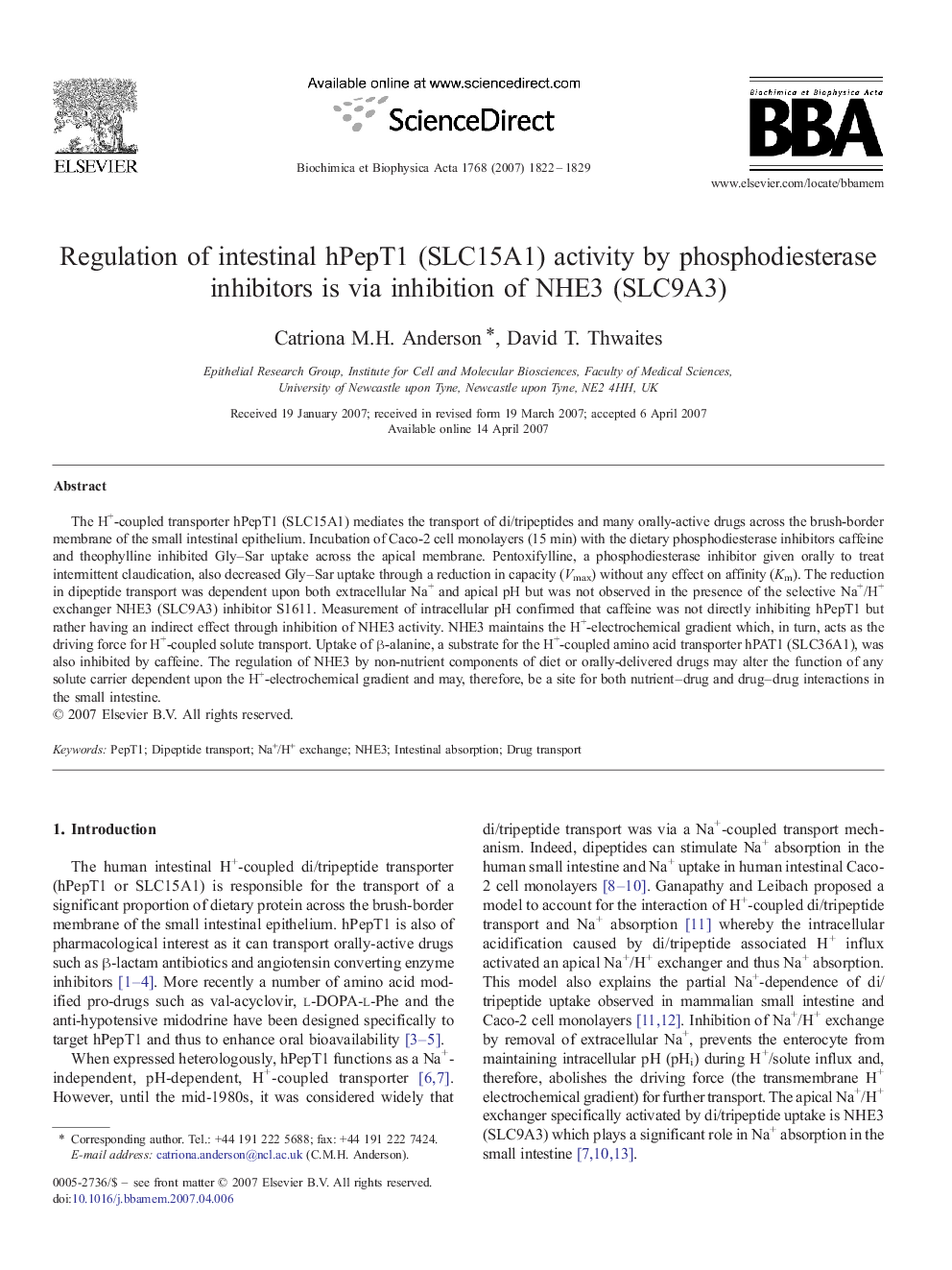| Article ID | Journal | Published Year | Pages | File Type |
|---|---|---|---|---|
| 10798085 | Biochimica et Biophysica Acta (BBA) - Biomembranes | 2007 | 8 Pages |
Abstract
The H+-coupled transporter hPepT1 (SLC15A1) mediates the transport of di/tripeptides and many orally-active drugs across the brush-border membrane of the small intestinal epithelium. Incubation of Caco-2 cell monolayers (15 min) with the dietary phosphodiesterase inhibitors caffeine and theophylline inhibited Gly-Sar uptake across the apical membrane. Pentoxifylline, a phosphodiesterase inhibitor given orally to treat intermittent claudication, also decreased Gly-Sar uptake through a reduction in capacity (Vmax) without any effect on affinity (Km). The reduction in dipeptide transport was dependent upon both extracellular Na+ and apical pH but was not observed in the presence of the selective Na+/H+ exchanger NHE3 (SLC9A3) inhibitor S1611. Measurement of intracellular pH confirmed that caffeine was not directly inhibiting hPepT1 but rather having an indirect effect through inhibition of NHE3 activity. NHE3 maintains the H+-electrochemical gradient which, in turn, acts as the driving force for H+-coupled solute transport. Uptake of β-alanine, a substrate for the H+-coupled amino acid transporter hPAT1 (SLC36A1), was also inhibited by caffeine. The regulation of NHE3 by non-nutrient components of diet or orally-delivered drugs may alter the function of any solute carrier dependent upon the H+-electrochemical gradient and may, therefore, be a site for both nutrient-drug and drug-drug interactions in the small intestine.
Related Topics
Life Sciences
Biochemistry, Genetics and Molecular Biology
Biochemistry
Authors
Catriona M.H. Anderson, David T. Thwaites,
